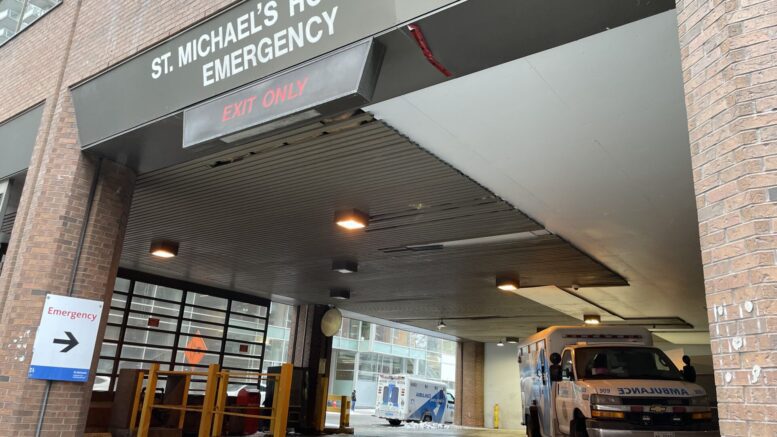On Feb. 7, Canada’s premiers approved a $46.2-billion injection into the provinces’ health-care systems. This 10-year plan aims to alleviate a largely strained public health system that doesn’t show signs of recovery after the COVID-19 pandemic.
The federal proposal met opposition from provincial leaders when it was pitched last December. Ontario Premier Doug Ford said it was a “starting point” and a “down payment on further negotiations.”
“Ontario doctors welcome any new health-care funding, but what the federal government offered was less than we had been expecting,” said Emily English, a spokesperson from the Ontario Medical Association (OMA).
What does the enhanced Canada Health Transfer (CHT) mean for Ontario, and will it solve health-care issues in the province?
What is the Canada Health Transfer (CHT)?
The CHT is a federal program designed to transfer money from the federal government to health-care systems across provinces and territories. It is one of four main government transfers that financially support programs and services in the country that range from social assistance to equalization. The provinces take money from the Consolidated Revenue Fund, and each province is fiscally responsible for how much they spend on health care.
Following the principles of the Canada Health Act, the CHT has to provide long-term predictable funding to health care and provide similar treatment to all Canadians, wherever they live.
Canada’s health-care spending in 2022 went a little over $330 billion, and it cost Canadians an average of $8,563, according to the Canadian Institute for Health Information. The country’s overall health expenditure rose from $269 billion in 2019 to $331 billion in 2022.
What is the 10-year plan for the CHT increase?
The $46.2 billion is extra money added to the CHT that provinces and territories will receive over 10 years to spend on health care. This plan focuses on four priority areas: family health services, health workers and backlogs, mental health and substance use, and a “modernized health system.”
The increase is not immediate. It will take the form of a five per cent increase for the first five years, and it will go down to a three per cent increase each year.
How does health care work in Ontario?
Ontario is the province with the largest health-care system in Canada; its health ministry oversees the service.
From 2021 to 2022, the province received financial support of $67.8 billion for health care, according to the Canada Health Act Annual Report 2021-2022. Due to the pandemic, some of the support was directed to temporary funding to the removal of waiting periods to accessing insurance coverage, the extension of some health cards’ expiry dates, and extra fees to pay physicians for virtual care services.
According to the Ontario Ministry of Finance, roughly 40 per cent of the province’s budget goes to health care.
Why did Ford accept the proposal?
If someone offers you money, you take it, said Nelson Wiseman, a political science professor at the University of Toronto. Although Prime Minister Justin Trudeau’s funding proposal didn't meet the premiers’ expectations, there was political pressure coming from health advocates for them to accept a funding increase for improving faltered health-care systems.
While adding extra money to pressing issues, such as staff shortages, seems like a fix, “they would have to do it anyways,” said Wiseman. “Every politician wants credit for what they’re doing.”
“Once they get the money, they’re more or less free to do whatever they want,” he said.
Will this increase fix health care in Ontario?
Is money the issue? Not according to Wiseman.
"It's structural reform," he said.
Ontario currently faces a shortage of family doctors, which accounts for 2.2 million Ontarians without one from 2020 to 2022, according to research from INSPIRE Primary Health Care. This is likely due to an increased number of doctors who stopped practicing after the pandemic.
While bringing out-of-province medical practitioners seems like a solution, this does not increase the number of doctors in the country, as they are simply moved to different places. “It’s very expensive to train doctors, so that’s a structural issue,” said Wiseman.
For Wiseman, "there are things that can be done without money; for example, [validating] credentials to doctors that have been trained abroad." Generally, an international medical graduate (IMG) in Ontario that wants to become a family doctor needs to obtain a license, certification, and one year of post-graduate training, according to HealthForceOntario (HFO). As HFO points out, this process "can be challenging, time consuming, and complicated."
"A long-term stable funding formula is needed to fix the cracks in the health-care system exposed by the pandemic," said English in a statement to the Toronto Observer. "This deal will address short-term issues ... [and it] can provide a start to build a better health-care system for the future."
In light of the provincial government's 2023-24 budget, the OMA urged the federal government to "license more physicians," "create a centralized" patient waitlist, and "move more care out of hospitals into the community."

